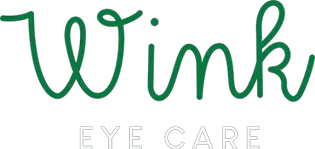Our Blogs
Looking For A Specific Post?
What Is the Difference Between Nearsightedness and Farsightedness?

Your vision shapes the way you experience the world, but what happens when it’s not as clear as it should be? Nearsightedness (myopia) and farsightedness (hyperopia) are two common conditions that can blur the lines—literally. These vision issues happen when your eyes struggle to focus light properly, making the world look less sharp and clear. While they affect your vision in opposite ways, both can have a big impact on your daily life. The good news? At Wink Eye Care, we’ve helped countless patients suffering from these conditions see the world in crystal-clear detail again. Let’s dive into what sets these conditions apart and how we can help you take control of your vision.
What Is Nearsightedness (Myopia)?
How Nearsightedness Impacts Vision
If you’re nearsighted, objects that are close to you appear clear, but those far away look blurry. For example, you may have no trouble reading a book, but road signs in the distance could seem out of focus.
Symptoms of Nearsightedness
Common symptoms include:
- Blurry vision when looking at distant objects
- Squinting to see things far away
- Eye strain or fatigue
- Difficulty seeing clearly while driving, particularly at night
Why Does Nearsightedness Happen?
Nearsightedness occurs when the shape of your eye causes light to focus in front of the retina instead of directly on it. This may happen because:
- Your eyeball is longer than normal.
- The curve of your cornea or lens is too steep.
Interestingly, the prevalence of nearsightedness is growing. Roughly 41.6% of Americans are now nearsighted, a figure that has nearly doubled over the past three decades. Factors such as increased screen time and reduced outdoor activities are thought to contribute to this rise.
What Is Farsightedness (Hyperopia)?
How Farsightedness Impacts Vision
Farsighted individuals experience the opposite issue. Distant objects may appear clear, while nearby objects seem blurry. For example, you might be able to see a street sign clearly but struggle with reading a menu up close.
Symptoms of Farsightedness
Signs that you might be farsighted include:
- Blurry vision up close
- Eye strain, especially when reading or working on a computer
- Headaches, particularly after prolonged close-up tasks
Why Does Farsightedness Happen?
Farsightedness occurs when light focuses behind the retina rather than directly on it. This can result from:
- Your eyeball being shorter than normal.
- Irregularities in the shape of your cornea or lens.
Unlike nearsightedness, farsightedness is less common, affecting about 5–10% of Americans. However, it can have a significant impact on daily activities if left uncorrected.
Which Condition Do I Have?
The best way to determine if you are nearsighted or farsighted is by scheduling a comprehensive eye exam. During the exam, an eye doctor will test for refractive errors by assessing how light enters and focuses in your eyes. They use tools like a phoropter and retinoscope to measure how your eyes bend light and identify whether you have difficulty seeing objects up close or far away. In addition to pinpointing refractive errors, the exam also evaluates your overall eye health to ensure your vision is as clear and comfortable as possible.
How Are These Conditions Treated?
Farsightedness and nearsightedness can often be managed effectively with similar treatment options, including:
1. Eyeglasses:
- The most common solution for both conditions.
- Customized lenses focus light correctly on the retina.
2. Contact Lenses:
- A practical alternative to glasses.
- Available in various materials and designs to suit your needs.
3. LASIK Surgery:
- A popular permanent solution for those who qualify.
- Reshapes the cornea so that light focuses directly on the retina.
Partner with Wink Eye Care for Your Vision Needs
While nearsightedness and farsightedness affect your vision in different ways, they often lead to similar symptoms, such as blurred vision, eye strain, and difficulty focusing. Addressing these symptoms early with the right treatment can improve your quality of life and visual comfort.
Still not sure whether you’re nearsighted or farsighted? Don’t leave your vision to guesswork. At Wink Eye Care, our dedicated team provides personalized, professional guidance for managing your vision effectively.
Schedule an appointment with us today and take the next step toward achieving clear, comfortable vision. Your eyes deserve the best care—we’re here to help every step of the way.
Ready To Take The Next Step?
Schedule Your
Appointment Online Now!
Click the button below to book your appointment effortlessly and conveniently.

